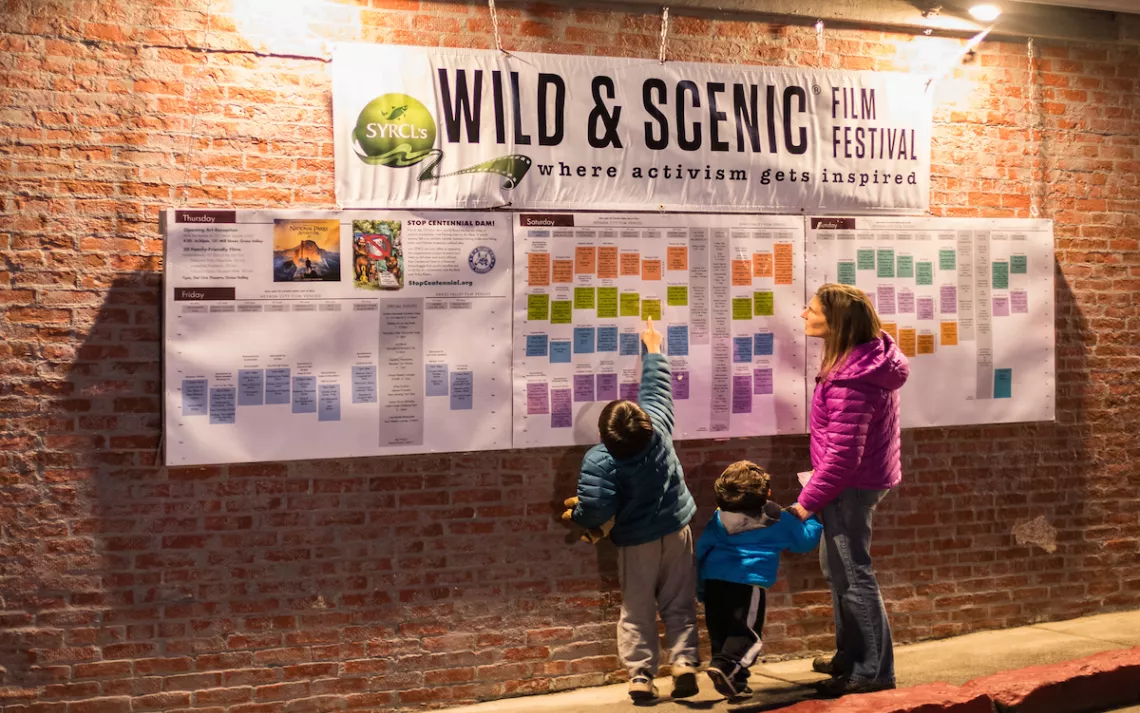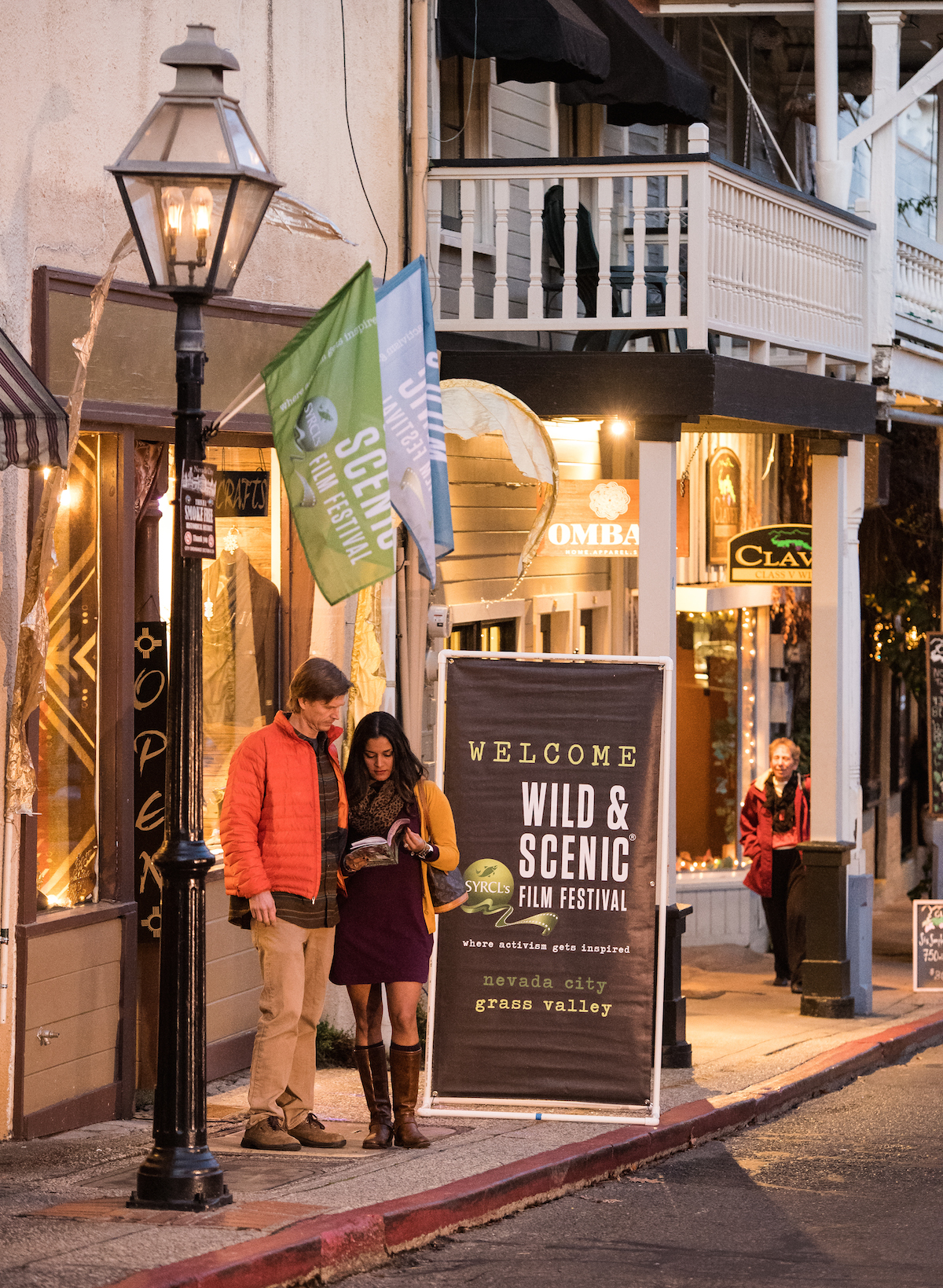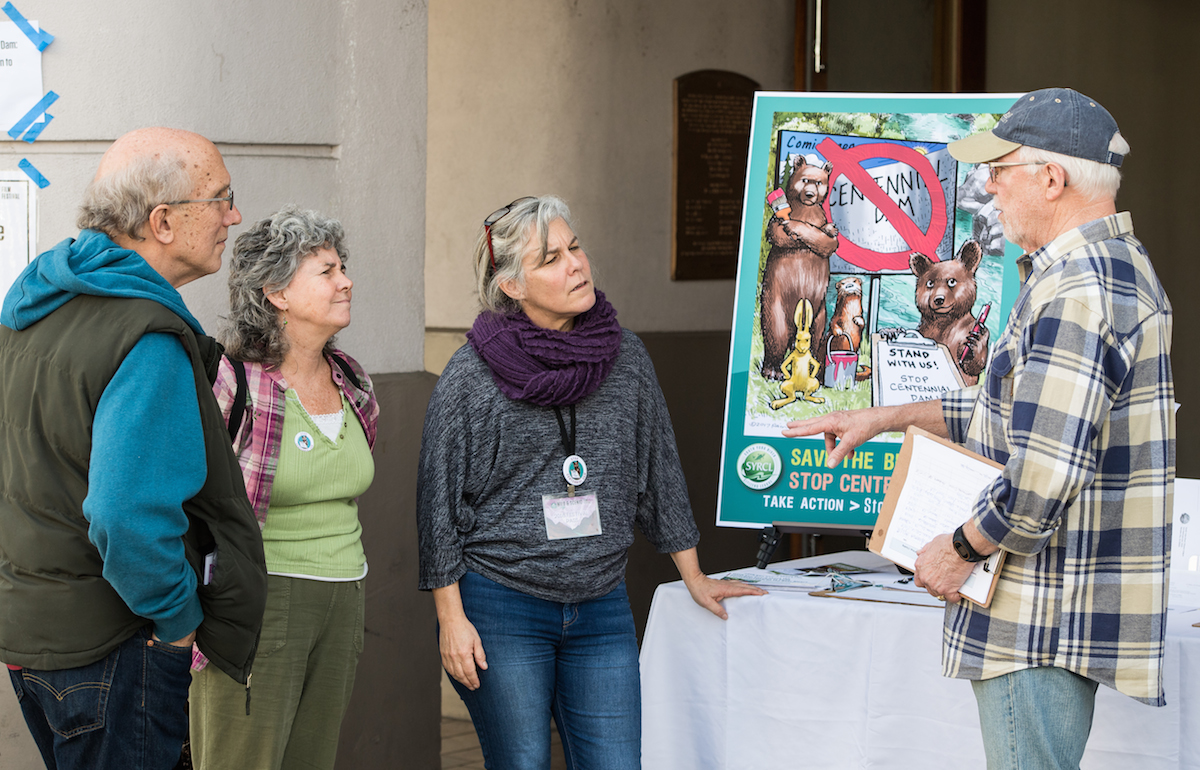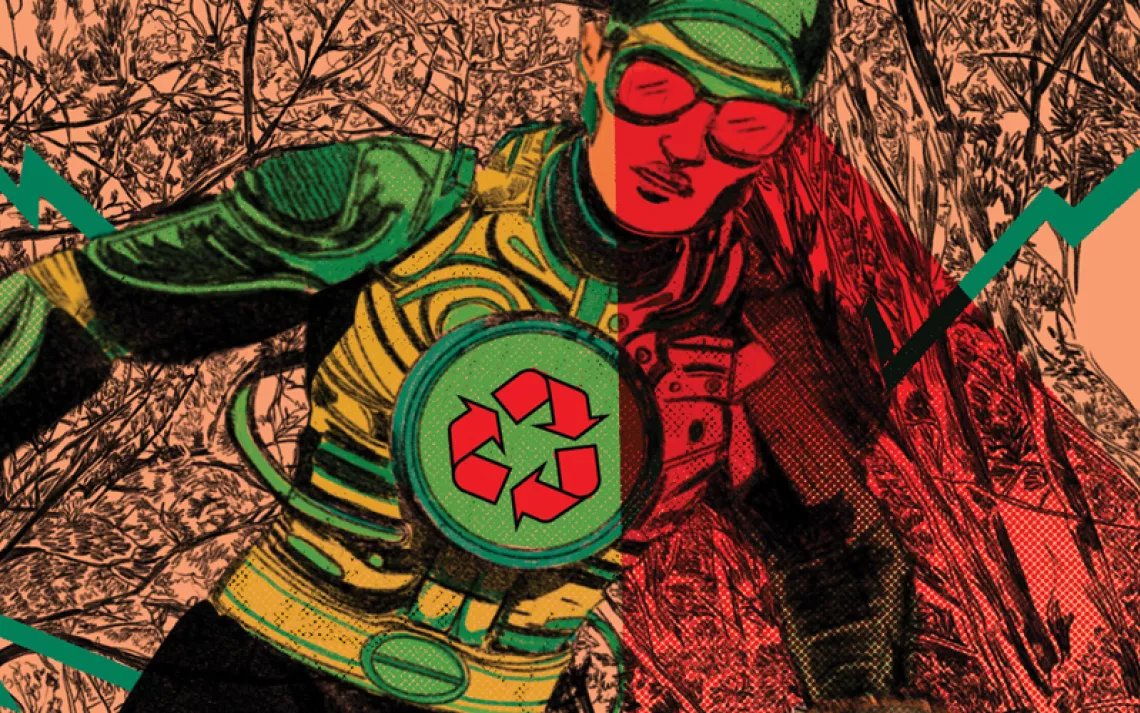A Sneak Peek Into This Year’s Best Environmental Films
Highlights from the Wild & Scenic Film Festival

Photos courtesy of Josh Miller
Hollywood loves history. Awards season 2018, after all, is buzzing with films that explore world wars, arms races, governmental and Olympic scandals. For those environmentalists who get behind the camera, however, the silver screen becomes an avenue to engage audiences in the issues, threats, and hopeful developments shaping their children’s future. In spite of the rapidly changing and increasingly fragmented media landscape, cinema remains a powerful tool for swiftly transforming lay viewers into impassioned advocates and activists. That’s why the volunteers laboring to protect the Sierra Nevada’s Yuba watershed launched the Wild & Scenic Film Festival in 2003.
The title is apt for an event that takes place within the nature-nestled Gold Rush relics of Nevada City, California. The festival’s namesake actually commemorates the 1999 designation of “Wild & Scenic” status for 39 miles of the nearby South Yuba River—a landmark achievement for the South Yuba River Citizens League (SYRCL). Each January since the event’s founding, SYRCL has used the festival to fundraise for its pet cause, host activist workshops (the fact that it always falls on Martin Luther King Jr. weekend does much to amplify the revolutionary spirit of the event), and screen 150-some films that explore a wide range of other local and global environmental issues.
Last Sunday, the four-day-long festival culminated with champagne, cake, and an awards ceremony, but the 2018 event is far from finished. Wild & Scenic is about to hit the road, where it’ll broadcast select films at museums, nature centers, and nonprofits around the world.
 So, which films dominated the world’s most far-reaching green film festival? Here are the movies—vetted by a jury of esteemed conservationists, writers, activists, and reviewers—to add to your 2018 must-watch list.
So, which films dominated the world’s most far-reaching green film festival? Here are the movies—vetted by a jury of esteemed conservationists, writers, activists, and reviewers—to add to your 2018 must-watch list.
The jury awarded honorable mentions to two films: Describing the first as the contender that best captured “the tenor of our times,” jurors selected David Byars’s No Man’s Land for its detailed, on-the-ground account of the 2016 standoff at Oregon’s Malheur National Wildlife Refuge between armed militants led by Ammond Bundy and other protesters (many of whom are now serving jail time) and law enforcement. The former group, largely composed of right-wing activists, claimed that the U.S. Forest Service, Bureau of Land Management, and other agencies are constitutionally required to turn over much of the federal public land they manage to individual states. No Man’s Land grimly documents the occupation from its inception to its dramatic demise and sheds light on the dangerously disenfranchised ideologues behind it.
The other jury award went to the decidedly cheerier Wasted! The Story of Food Waste, a star-powered foodie frenzy that reveals what some of the most influential chefs—among them Anthony Bourdain, Dan Barber, and Danny Bowien—are doing to “use the whole buffalo”; i.e., turn what most would consider food scraps into dishes that wow gourmands and help foster a more secure food system. Wasted shows how food waste is contributing to climate change and lays out the small, often delicious changes that anyone can make to help respond to the ongoing crisis.
“Best Short” went to A Letter to Congress, a stirring three-minute film that shows off many of America’s most wild and stunning places. The real star, however, is the soundtrack: a voiceover starring Wallace Stegner as he orates his 1960 letter to Congress emphasizing the importance of preserving wilderness. The effect couldn’t be more prescient, nor Stegner’s words more relevant to our current state. It’s a kick in the pants to unify viewers against the transfer of public lands—arguably our most valuable heritage—to private and corporate interests.
Outdoor adventurers and anyone who loves an epic tale of reinvention would be wise to check out this year’s “Most Inspiring Adventure Film”: Charged: The Eduardo Garcia Story. The unorthodox survival documentary tells the story of a vivacious young chef who in 2011 was shocked with 2,400 volts of electricity while hiking deep within Montana’s backcountry. Despite doctors’ prognosis that he was “a dead man with a heartbeat”—and the subsequent discovery that Garcia was harboring stage-2 testicular cancer—the protagonist, minus four ribs and his left hand, pulls off an emotional recovery. He also becomes an ambassador athlete and speaker for the Challenged Athletes Foundation and builds a better life after the tragedy—largely thanks, in his own estimation, to the healing power of time spent in the great outdoors.
The theme of this year’s Wild & Scenic Film Festival was “Groundswell.” Explains festival director and SYRCL executive director Melinda Booth, “The idea is to encourage environmental awareness and action from the ground up—to provide the inspiration and tools people need to protect their hometown rivers and landscapes.” It felt appropriate, then, to see “Best in Theme” go to Water Warriors, a 22-minute film about a motley, multicultural group of Canadians—including members of the Mi’kmaq Elsipogtog First Nation, French-speaking Arcadians, and white, English-speaking families—that for months in 2013 set up a series of road blockades to keep frackers away from their beloved natural resources in New Brunswick. Not only does the community succeed in protecting their water from the oil and natural gas industry, but they also elect a new governing body and win an indefinite moratorium on fracking in their province. It’ll inspire you, too.
You might not expect a jury of mostly white progressives to bestow its prestigious “Spirit of Activism” award upon a feature-length documentary that defends the infamous Inuit seal hunt. Out of Canada, the artfully nuanced Angry Inuk makes a strong case for the fruits of this hunt—both seals’ meat and pelts—as a vital means of sustenance for Inuit peoples. Viewers journey to director Alethea Arnaquq-Baril’s beautiful community of Iqaluit to meet sealskin-dependent advocates, lawyers, and even seal fur clothing designers, all of whom are fighting to overturn the EU’s ban on seal products. The devastatingly eye-opening Angry Inuk does much to highlight the importance of activists’ responsibility to seek input from diverse voices, and the fallacy of drawing false distinctions between oppositional parties—in this case, native subsistence hunters and profit-driven commercial hunters.
As for “Best of Festival”? The most prestigious Wild & Scenic award went to Rodents of Unusual Size, which you may recall Sierra reviewing last month. The hair-raising feature-length documentary offers a lively message about the threat of invasive species (in this case monstrous 20-pound swamp rats that some Louisianans feel make for great pets) and showcases creative ways to address it.
A second jury, made up entirely of children, selected an alternate “Best of Festival” winner. The kids’ award went to My Irnik, a 15-minute film about a young father and dog musher who finds delightful ways to teach his young son about the value of shared adventures, and of keeping their ancestral Inuit heritage alive.
 Jonesing to check out these winners? You may be in luck. Wild & Scenic films are already en route to Berlin, Houston, Denver, Havre, Missouri, and beyond. Find the full touring schedule here. And if you’d like to channel some movie magic to inspire environmental action within your community, you can still apply to host a leg of the tour.
Jonesing to check out these winners? You may be in luck. Wild & Scenic films are already en route to Berlin, Houston, Denver, Havre, Missouri, and beyond. Find the full touring schedule here. And if you’d like to channel some movie magic to inspire environmental action within your community, you can still apply to host a leg of the tour.
Happy viewing and change-making!
 The Magazine of The Sierra Club
The Magazine of The Sierra Club







